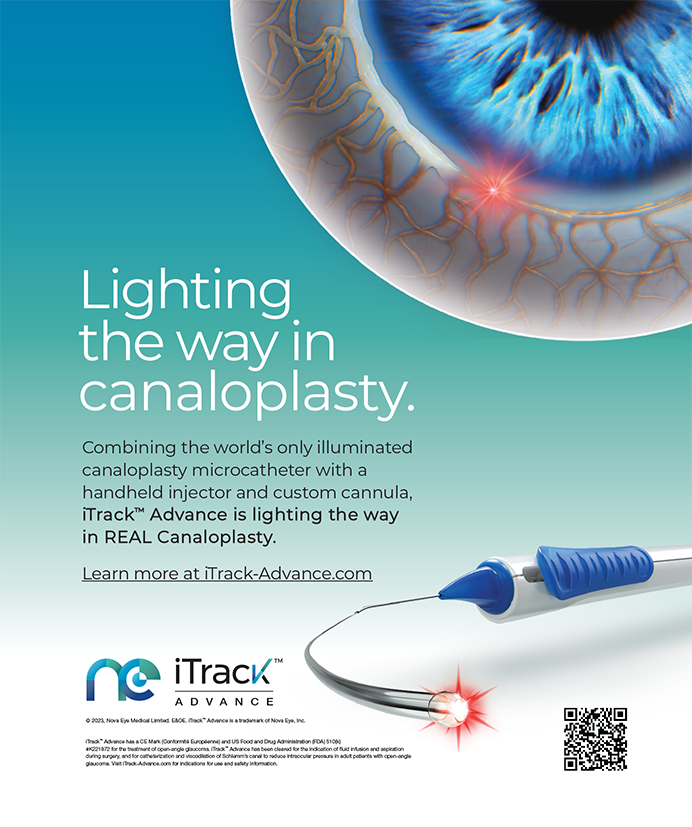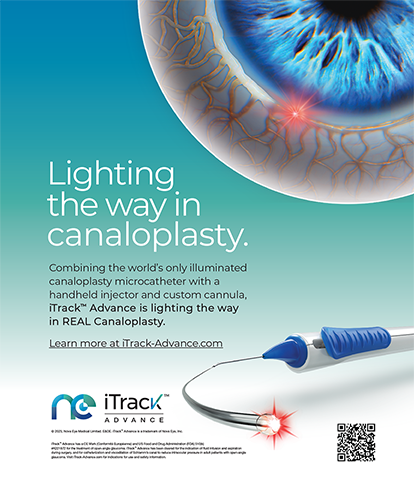Currently, the approved use of the femtosecond laser in cataract surgery primarily supports the premium IOL channel; surgeons may use the laser whenever they please, but they may not charge patients unless surgeons are performing a procedure in which an enhanced refractive outcome is being delivered.
Therefore, the first thing a surgeon or a group of surgeons must consider is their total surgical cataract volume and their conversion rates to premium implants. The average conversion rate in the United States is about 15% according to data from Market Scope and others. The average US surgeon performs about 400 cataract surgeries a year, so that would mean that he or she has about 60 premium cases. It takes a volume of closer to 600 cases per year to make a femtosecond laser work well financially.
The scenario is not much different than that of LASIK surgery, and it is interesting how the numbers come out to be almost exactly the same. Using that more mature commercial experience as a guide, one needs a femtosecond laser to make the flap and an excimer laser to reshape the cornea. A practice can break even after approximately 400 surgeries, but it takes about 600 to really make this work financially. At around 1,000 cases a year, the numbers, are much more robust. The analogy of laser cataract surgery to LASIK is almost perfect, and surgeons can draw on almost 20 years of history in the laser acquisition business.
Early adopters of the laser recognize a benefit, particularly in a situation in which a surgeon is the only one in his or her region to have the technology. Those practices will have a bump in their case growth, which was the initial experience that my colleagues and I had at Minnesota Eye Consultants. Entering into a market where there are already several femtosecond lasers in use, that increase in volume cannot be counted on.
MODELS TO CONSIDER
From what I have seen here in the Twin Cities, a couple of models seem to work. Certainly, there are individual surgeons with high-volume practices and high conversion rates who can afford their own lasers: if one is doing 1,000 to 2,000 cataract procedures a year with a 15% conversion rate, then owning a laser may well make sense for the practice.
This year, our group will do about 6,500 cataract surgeries with about a 20% conversion rate, so we have, potentially, about 1,200 premium IOLs a year. We have decided, however, that we are not best served by owning a laser at the current time. What, then, are the options? One in our metropolitan area is to have a large, shared facility (Phillips Eye Institute) where every ophthalmologist in the community can belong. The institute offers excimer and femtosecond lasers for corneal refractive surgery, and now it is acquiring a femtosecond laser for cataract surgery. So, in this model, there are 150 ophthalmologists on the staff at the institute, and together, they perform more than 10,000 cataract surgeries per year. The institute simply charges a procedural fee to the individual ophthalmologist, so the surgeon can set his or her pricing and therefore make a profit from the very first case. Another important advantage of sharing the laser is that the center can have an experienced technician to run the equipment; if the surgeon does not have a high volume, that aspect can be very helpful.
There also exist certain settings where ophthalmologists or competitive practices have come together and decided to have joint a venture in order to obtain the technology.
MOBILE ACCESS
The other model that I think is attractive is partnering with companies that offer mobile access to the femtosecond laser. The two I am familiar with are Sightpath Medical and Precision Lens Services; my practice works with Sightpath. These companies bring the femtosecond laser to the surgeon’s surgery center, whether it is hospital based or an ambulatory surgery center. The company sets up the laser, typically the night before the surgery day. Considerations with this arrangement include, obviously, having the infrastructure to support the laser’s size. The company provides a very experienced technician who calibrates the laser and makes sure everything is running perfectly. The Sightpath technician spends the surgery day with the surgeon(s), and he or she can also guide the ophthalmologist through the cases. Having a technician who has that type of extensive experience with the laser is extremely beneficial and helps to keep the surgeon current.
To use a mobile service like Sightpath, the surgeon must commit to a total of eight cases. A surgeon considering this option would schedule 1 day a month for laser cataract surgery. For example, let us say he or she operates 1 day a week. One day a month would be scheduled as laser cataract day (8 cases x 12 months). If the surgeon did not have enough volume, he or she could do the mobile service every other month. Many patients would likely wait for the laser. One would want to be able to do around 100 cases per year to access the laser in this manner.
I think that this is a very effective model. Sightpath charges a fixed fee—$650 to $750 per eye—so right from the very first case (assuming pricing per the premium channel and in an appropriate fashion), the user is generating revenue rather than having losses because of the acquisition costs of a laser and the equipment fees. Once the surgeon gains experience and grows his or her volume or finds a group of ophthalmologists who want to participate in a joint venture, he or she can always acquire a laser. Many practices like ours that have a relatively high volume find this shared-access model attractive. We use this model for both excimer and femtosecond lasers. In our practice, different surgeons have varied levels of interest in using the technology; therefore, it can sometimes be difficult to get the group to agree on a purchase. I favor these mobile services, which started out by providing cataract equipment for small communities and hospitals, and the concept is not only in ophthalmology. Equipment companies provide magnetic resonance imaging systems, for example, among other services.
CONCLUSION
Three practices in the Twin Cities metropolitan area, with smaller practices than we have, own their own femtosecond lasers for cataract surgery. Our practice was the first to have access to the laser in partnership with Sightpath, and now, we also have shared access at Phillips Eye Institute.
I am not sure if laser cataract surgery is better than standard procedures; I am not convinced that I am doing my patients a disservice if I do not use the laser. I do not believe, however, that the naysayers have it right, either. The technology is fun to use, yet very expensive. For our group, the largest cataract practice in the Twin Cities, we have chosen not to acquire our own technology and instead use the shared-access model.
Richard L. Lindstrom, MD, is the founder of and an attending surgeon at Minnesota Eye Consultants, PA, in Bloomington. He is a consultant to Sightpath Medical. Dr. Lindstrom may be reached at (612) 813-3600; rllindstrom@mneye.com.


